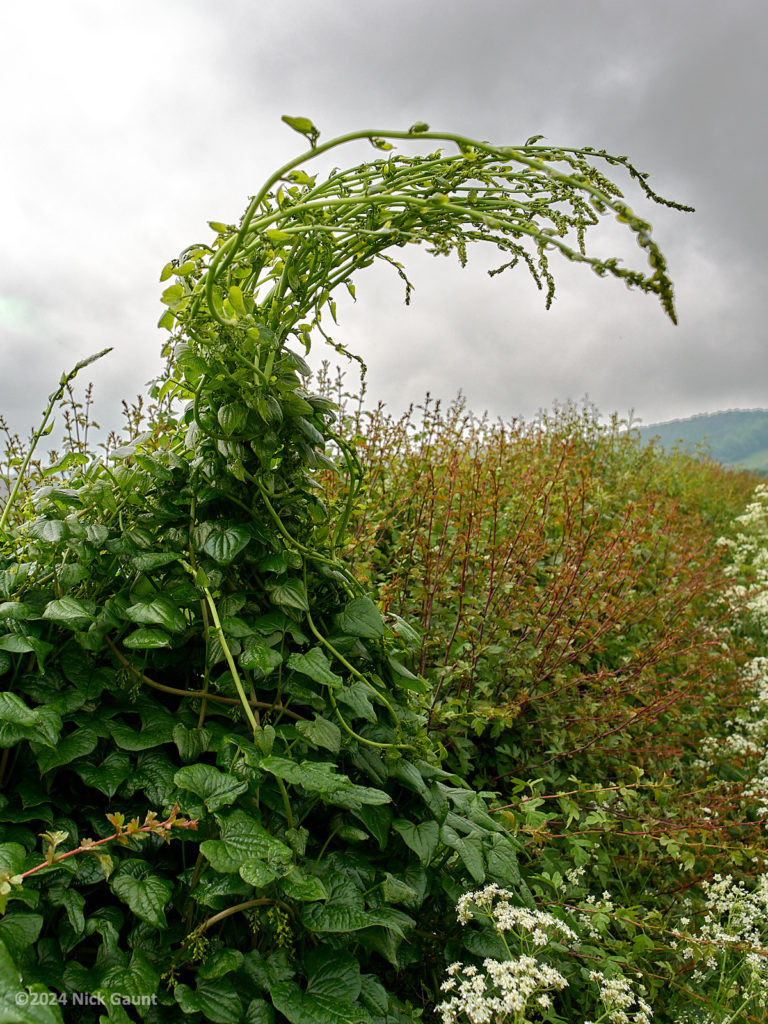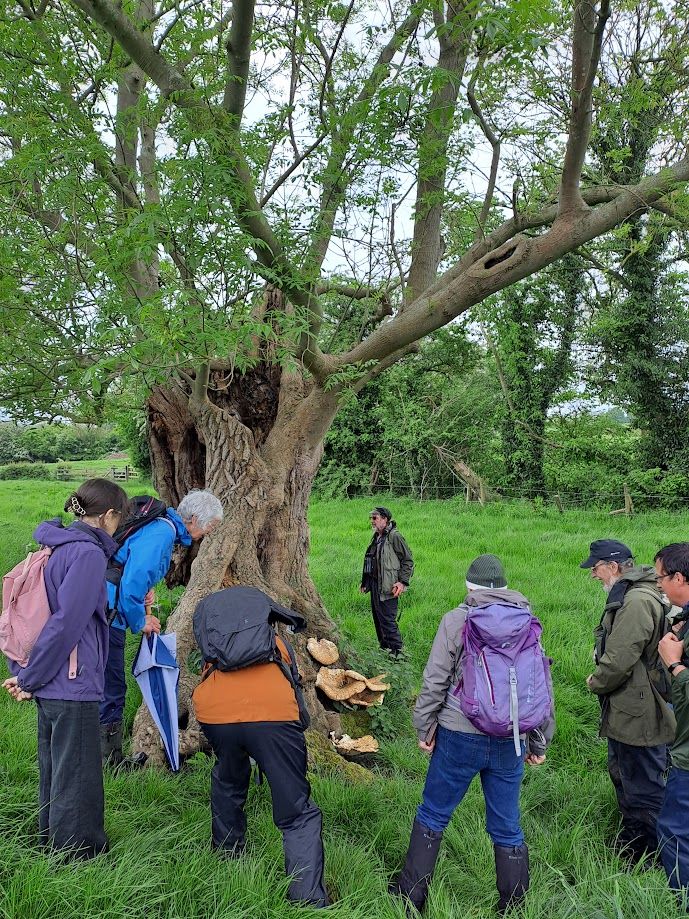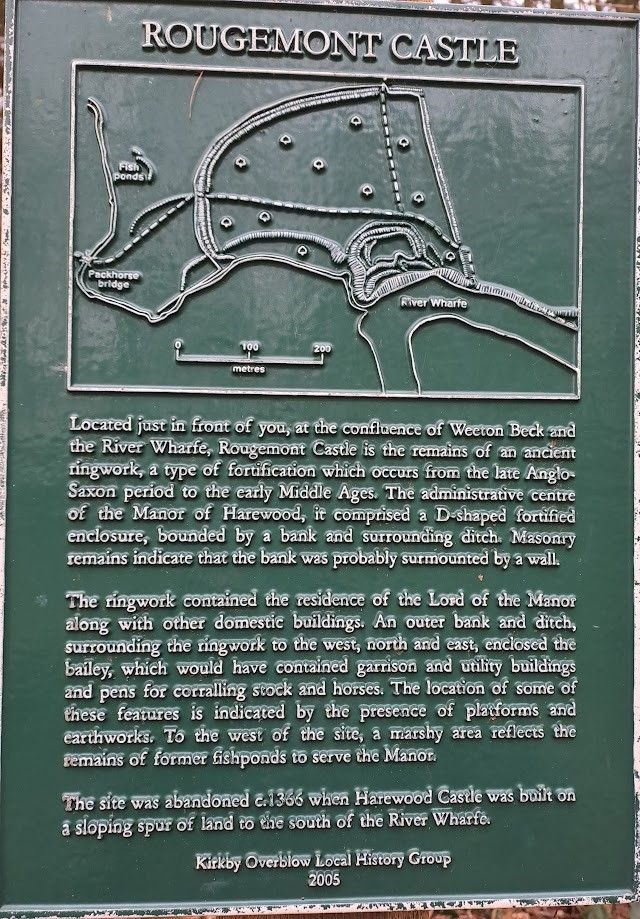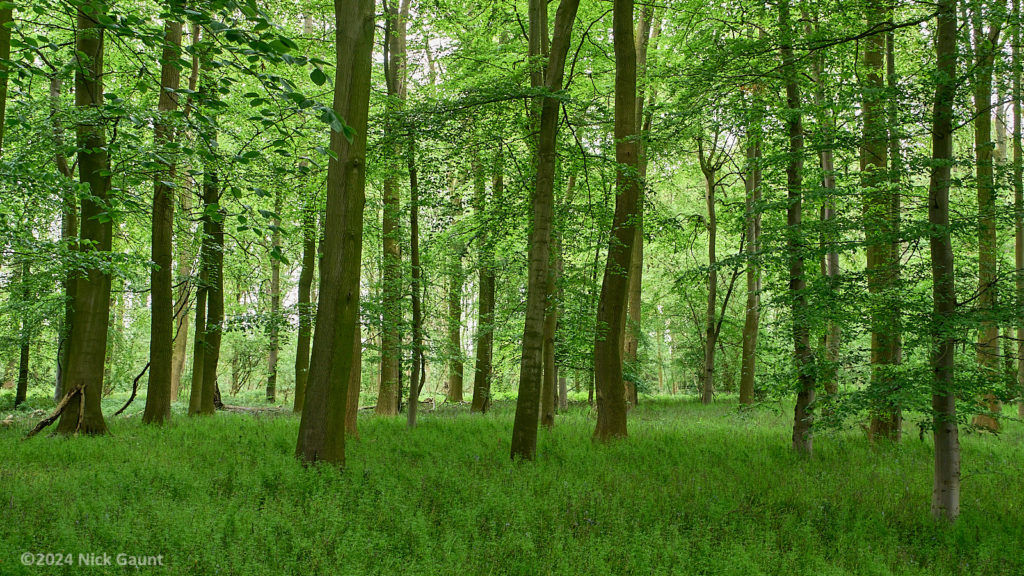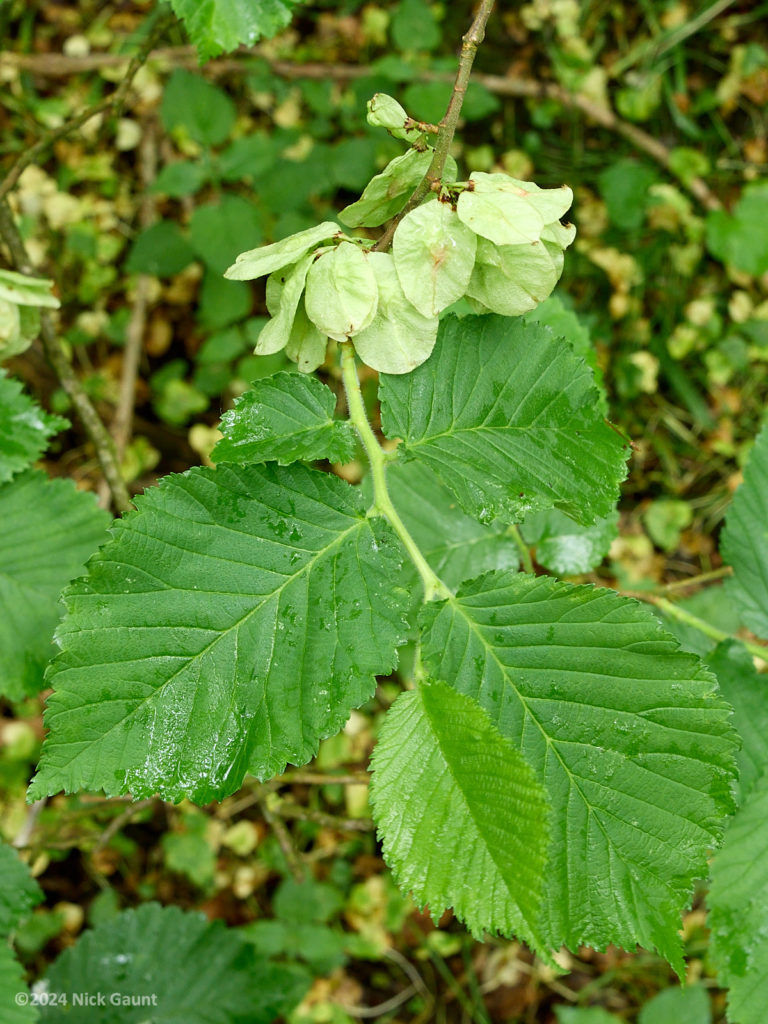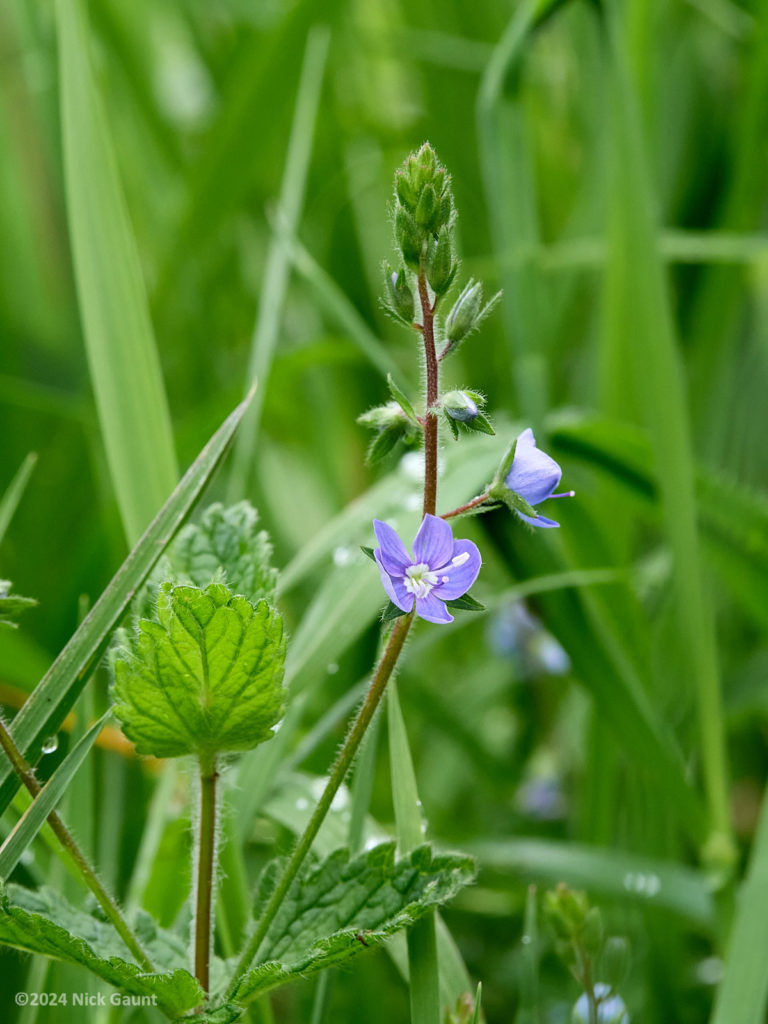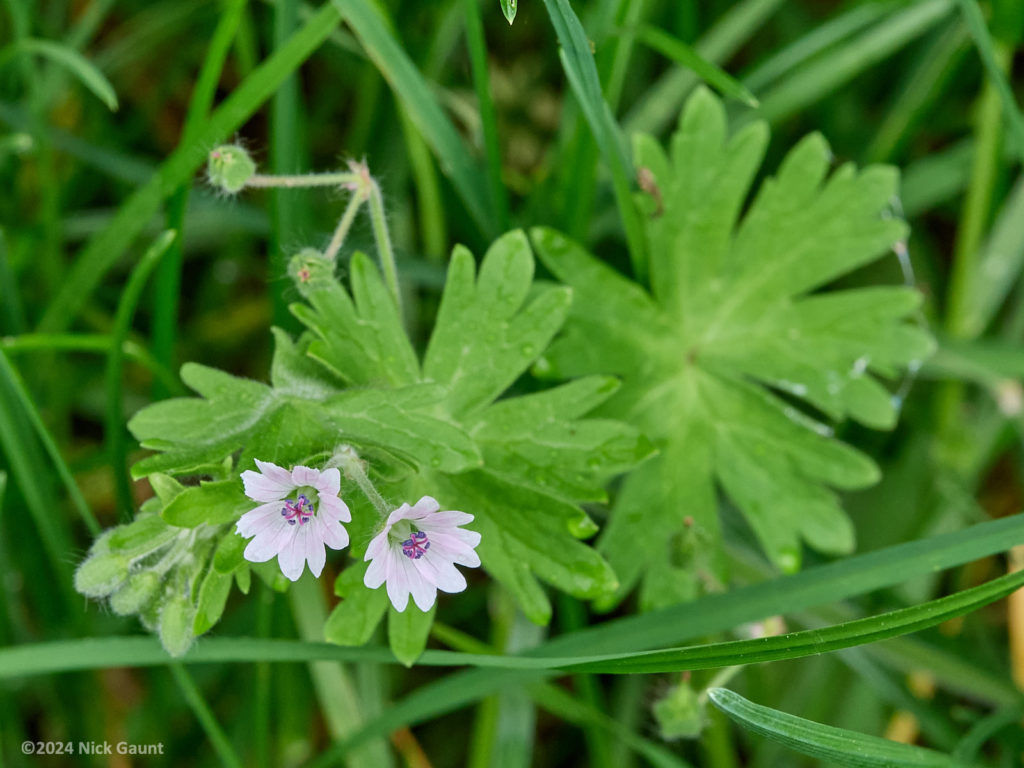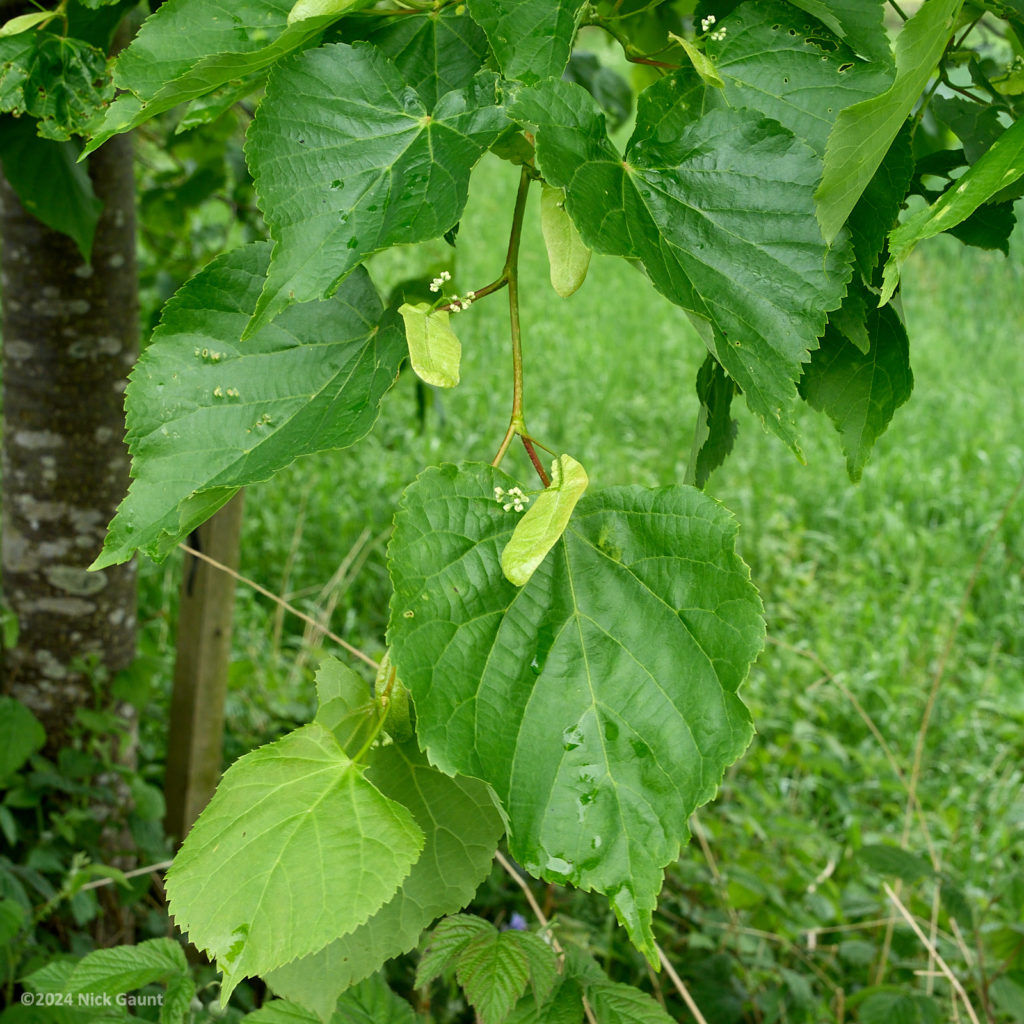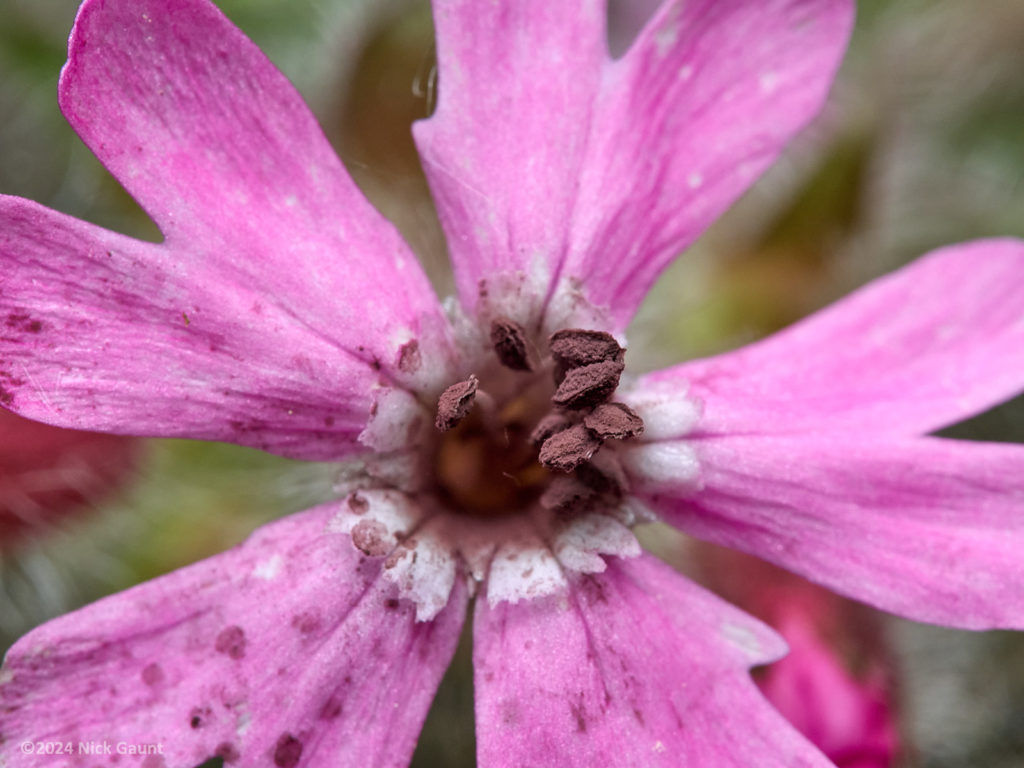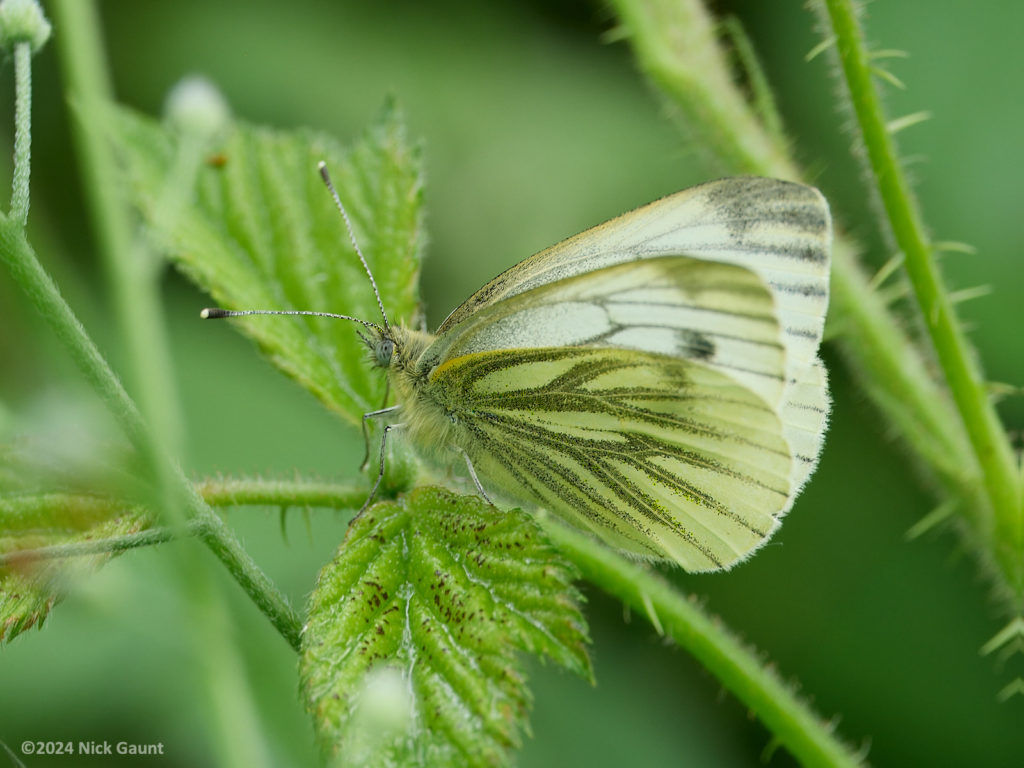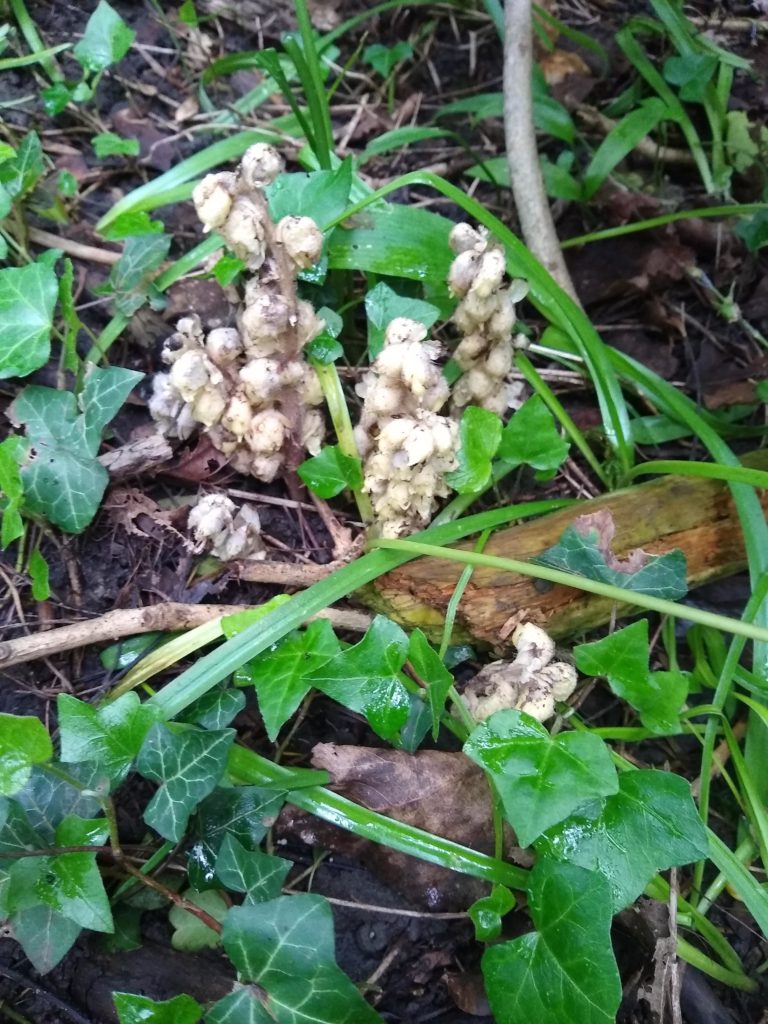Our party assembled in Weeton Church car park to visit Rougemont Carr. The Carr was formerly known as Rougemont Castle and is situated above a steep north bank of the River Wharfe, and is accessible by footpath from Weeton village. A plaque by the Kirkby Overblow Local History Group provides some details about this beautiful ancient woodland site. Despite a gloomy start, the weather turned warmer and warmer so that by the end of the day some of us were carrying more clothes than we were wearing.
A song thrush then began to sing to give us its blessing, and as we left the car park we encountered a mass of Barren Brome growing beside the entrance gate. One grass book describes this species as a ‘sock destroyer’ and it certainly lives up to its name when its very long, spined awns become trapped in your socks!
As we strolled along down Gallogate Lane, before long Andy Woodall was showing us the Hawthorn Cup fungus which affects the leaves of the Hawthorn, turning them brown. These affected leaves also take on the smell of the flowers. The cups grow below the bushes although we did not see any of these on the day.
We were pleased to find in the hedgerow some wild Hops, with the males and females growing on separate plants. We also came across an elm hedge, which I understand is more commonly found in the south of England. The roadside verges proved to be rich in species and included Bush Vetch, Nipplewort, Hairy Bittercress, and Wintercress. We noted the differences between Meadow and Creeping Buttercups and spotted various grasses including Rough Meadow Grass and Giant Fescue. On a species of Garlic Mustard we found the single egg of the Orange Tip Butterfly, laid singly because the larvae are cannibalistic.
The walk then took us over fields and we saw Dryad’s Saddle fungus on an ancient Ash Tree with Pignut and Yorkshire Fog all around. As we entered the woodland area, we then encountered a different flora including Leopardsbane, various Ferns, Enchanter’s Nightshade, Elm, Ash, Pedunculate Oak and Beech trees. Sadly we missed the Bluebells flowering at their best although this did not seem to curb our enthusiasm.
We were treated to the fascinating sight of Campion Anther Smut. Since Red Campion is easy to find, this smut species is also easy to find and it shows in the centre of the flowers, turning them into a sooty brown to purplish-black colour instead of the usual light pink, the stamens and anthers being coated with this spore mass.
After our lunch, we visited the river edge to find Toothwort, a parasitic plant belonging to the Broomrape family. Other plants found there included Dame’s Violet, and Phragmites (Common Reed). We then returned through the woodland, climbed a difficult stile and walked over fields this time containing Bulbous Buttercups and Great Burnet, although it was too early to see it in flower.
As we wended our way back to the car park we were able to reflect upon all the interesting species we had seen and discussed on the day. Our thanks to Kerry Morrison for organising the event; to Bruce Brown for leading the walk; to Andy Woodall for his fungi expertise, and to all the other knowledgeable people for their input. It was indeed a great day.
Sonia Starbuck
